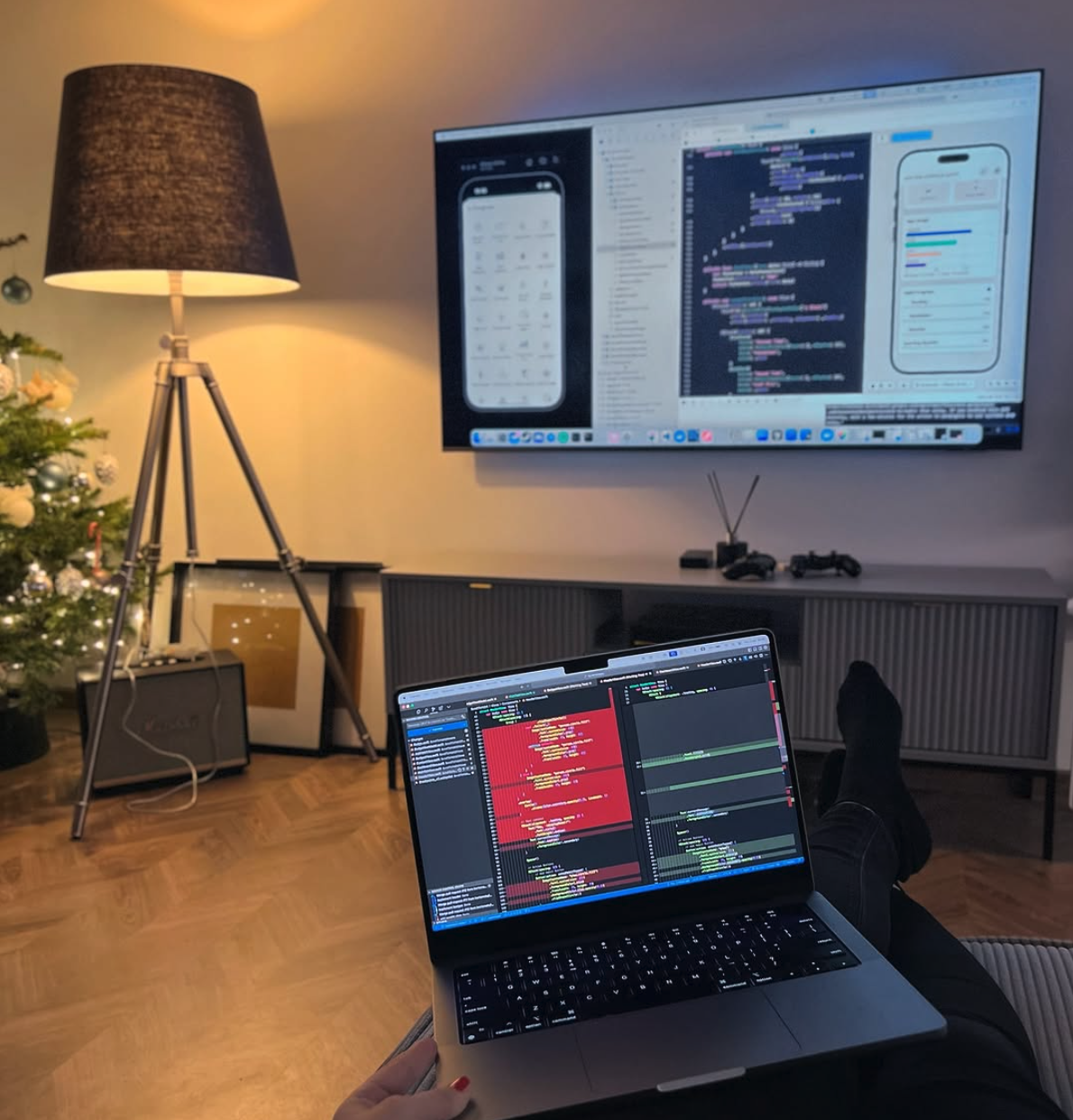Server Components vs Client Components in Next.js
Key differences between Server and Client Components across Next.js versions 13, 14, and 15.

Next.js has revolutionized React development with its introduction of Server Components, fundamentally changing how we build web applications. This guide explores the differences between Server Components and Client Components in Next.js, with specific comparisons across versions 13, 14, and the latest version 15.
Understanding the Component Model Evolution #
The component model in Next.js has evolved significantly since the introduction of the App Router in version 13. Let's explore how Server and Client Components differ and what improvements versions 14 and 15 have brought to the table.
1. Rendering Location Server Components:• Execute entirely on the server
• HTML is generated on the server and sent to the client
• No JavaScript bundle is sent to the client for these components
• Available in Next.js 13, 14, and 15, with performance improvements in each version
Client Components:• Execute initially on the server for the first render (for hydration)
• Continue execution on the client browser
• Require JavaScript to be sent to the client
• Marked with the 'use client' directive at the top of the file
// Server Component (default in Next.js 13, 14, and 15) // app/products/page.js export default async function ProductsPage() { // This data fetching happens on the server const products = await fetch('https://api.example.com/products').then(res => res.json() ); return ( <div> <h1>Products</h1> <ul> {products.map(product => ( <li key={product.id}>{product.name}</li> ))} </ul> </div> );
}
// Client Component (Next.js 13, 14, and 15) // app/counter.js 'use client'; import { useState } from 'react'; export default function Counter() { const [count, setCount] = useState(0); return ( <div> <p>Count: {count}</p> <button onClick={() => setCount(count + 1)}>Increment</button> </div> );
}
• Can fetch data directly in the component without useEffect or external libraries
• Data fetching doesn't block rendering in Next.js 14 and 15 (improved from 13)
• Support for parallel data fetching
Client Components:• Require hooks like useEffect or SWR/React Query for data fetching
• Create additional client-server roundtrips
• Can lead to loading spinners and layout shifts
Version Differences: Next.js 13: Introduced basic data fetching in Server Components. Next.js 14: Introduced partial prerendering, which allows server components to stream in data without blocking the initial HTML response. Next.js 15: Changed caching semantics - GET Route Handlers and Client Router Cache are now uncached by default (previously cached by default). Also introduced async request APIs for headers, cookies, params, and searchParams.
// Next.js 15 Server Component with Async Request APIs // app/dashboard/page.js import { cookies, headers } from 'next/headers'; export default async function Dashboard({ searchParams }) { // In Next.js 15, these are now async APIs const cookieStore = await cookies(); const headersList = await headers(); // These fetch calls run in parallel automatically const userData = fetch('https://api.example.com/user').then(res => res.json() ); const revenueData = fetch('https://api.example.com/revenue').then(res => res.json() ); // Wait for both to resolve const [user, revenue] = await Promise.all([userData, revenueData]); return ( <div> <h1>Welcome, {user.name}</h1> <RevenueChart data={revenue} /> </div> );
}
// Client Component Data Fetching (consistent across versions) // app/profile/client-profile.js 'use client'; import { useState, useEffect } from 'react'; export default function ClientProfile() { const [user, setUser] = useState(null); const [loading, setLoading] = useState(true); const [error, setError] = useState(null); useEffect(() => { async function fetchUser() { try { const response = await fetch('https://api.example.com/user'); if (!response.ok) { throw new Error('Failed to fetch user data'); } const data = await response.json(); setUser(data); } catch (err) { setError(err.message); console.error('Error fetching user:', err); } finally { setLoading(false); } } fetchUser(); }, []); if (loading) return <div>Loading...</div>; if (error) return <div>Error: {error}</div>; if (!user) return <div>No user data found</div>; return ( <div> <h1>Profile: {user.name}</h1> <p>Email: {user.email}</p> </div> );
}
• Cannot use React hooks (useState, useEffect, etc.)
• Cannot attach event handlers (onClick, onChange, etc.)
• Cannot access browser APIs (localStorage, window, etc.)
• Identical limitations across Next.js 13, 14, and 15
Client Components:• Full access to React hooks ecosystem
• Can handle user interactions and events
• Can access browser APIs
• Behavior consistent across Next.js 13, 14, and 15
Version Differences: Next.js 13 & 14: Similar behavior for interactivity. Next.js 15: Integrates with React 19, which includes experimental support for the React Compiler. This compiler can automatically optimize your code by reducing the need for manual memoization with useMemo and useCallback, making Client Components more efficient.
// Server Component (cannot use hooks or event handlers) export default function ServerButton() { // This would cause an error in Next.js 13, 14, and 15: // const [clicked, setClicked] = useState(false); // This would also cause an error: // return <button onClick={() => alert('Clicked')}>Click me</button>; // Instead, we need to use a Client Component for interactivity return <ClientButton />;
}
// Client Component for interactivity (Next.js 15 with React Compiler benefits) 'use client'; import { useState } from 'react'; export default function ClientButton() { const [clicked, setClicked] = useState(false); // In Next.js 15 with React Compiler (experimental), // this function would be automatically optimized without needing useCallback const handleClick = () => setClicked(!clicked); return ( <button onClick={handleClick} className={clicked ? 'bg-green-500' : 'bg-blue-500'} aria-pressed={clicked} > {clicked ? 'Clicked!' : 'Click me'} </button> );
}
• Zero impact on client JavaScript bundle size
• Don't contribute to the JavaScript that needs to be downloaded
• Improved performance for users on slow connections or mobile devices
Client Components:• Increase the JavaScript bundle size
• Require hydration on the client
• Impact initial page load performance
Version Differences: Next.js 13: Introduced the concept of Server Components to reduce client bundle size. Next.js 14: Introduced improved tree-shaking and better code splitting, resulting in smaller client bundles. Next.js 15: Further optimized bundling of external packages, making client bundles even smaller and more efficient.Component Composition Patterns #
The most effective Next.js applications use a hybrid approach, combining Server and Client Components strategically:
// app/products/[id]/page.js - Server Component import { ProductDetails } from './product-details'; import { AddToCartButton } from './add-to-cart-button'; import { notFound } from 'next/navigation'; export default async function ProductPage({ params }) { // Fetch data on the server try { const response = await fetch( https://api.example.com/products/${params.id} ); // Handle 404 errors gracefully if (!response.ok) { if (response.status === 404) { notFound(); } throw new Error(Failed to fetch product: ${response.statusText}); } const product = await response.json(); return ( <div className="product-page"> {/<em> Server Component with product data </em>/} <ProductDetails product={product} /> {/<em> Client Component for interactivity </em>/} <AddToCartButton productId={product.id} /> </div> ); } catch (error) { console.error('Error loading product:', error); throw error; // Let the error boundary handle it }
}
// app/products/[id]/product-details.js - Server Component export function ProductDetails({ product }) { if (!product) return null; return ( <div> <h1>{product.name}</h1> <p className="description">{product.description}</p> <div className="price">${product.price.toFixed(2)}</div> </div> );
}
// app/products/[id]/add-to-cart-button.js - Client Component 'use client'; import { useState } from 'react'; export function AddToCartButton({ productId }) { const [isAdding, setIsAdding] = useState(false); const [error, setError] = useState(null); const [success, setSuccess] = useState(false); async function handleAddToCart() { setIsAdding(true); setError(null); setSuccess(false); try { const response = await fetch('/api/cart', { method: 'POST', body: JSON.stringify({ productId }), headers: { 'Content-Type': 'application/json' }, }); if (!response.ok) { throw new Error('Failed to add item to cart'); } setSuccess(true); } catch (err) { setError(err.message); console.error('Error adding to cart:', err); } finally { setIsAdding(false); } } return ( <div> <button onClick={handleAddToCart} disabled={isAdding} className={add-to-cart-button ${success ? 'success' : ''} ${error ? 'error' : ''}} aria-busy={isAdding} > {isAdding ? 'Adding...' : success ? 'Added to Cart' : 'Add to Cart'} </button> {error && <p className="error-message">{error}</p>} </div> );
}
• Allow Server Components to handle form submissions and data mutations
• Enable progressive enhancement with and without JavaScript
Version Differences: Next.js 13: Server Actions were in experimental stage. Next.js 14: Server Actions became stable and production-ready with seamless form integration. Next.js 15: Introduced the new

